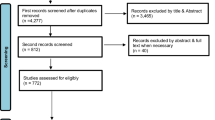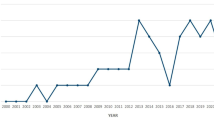Abstract
Open educational resources (OER) are digitised material freely available to the students and self learners. Many institutions had initiated in incorporating these OERs in their higher educational system, to improve the quality of teaching and learning. These resources promotes individualised study, collaborative learning. If they are coupled with Learning Objects of Learning Management System (LMS), they can lead to opportunities for further pedagogical innovation. It has become increasingly important for educational institutions to support these resources, in a planned and systematic manner. Adapt, assemble and conceptualise existing OERs to respond to diverse learning needs of students and support a variety of learning approaches for a given learning goal is a challenge. In this work, convergence of OERs with Learning Objects is done through metadata using classification techniques. Localisation of these high quality learning materials with the learning content of LMS, delivered as a single instructional unit may help in greater knowledge delivery and this can satisfy the learning needs of diverse student.









Similar content being viewed by others
References
Aski, B. A., & Torshizi, H. A. (2009). The Use of classification techniques to enrich e-learning environments. Age, 24, 49.
Atkins, D. E., Brown, J. S., & Hammond, A. L. (2007). A review of the open educational resources (OER) movement: Achievements, challenges, and new opportunities (pp. 229–246). Creative Common.
Baylari, A., & Montazer, G. A. (2009). Design a personalized e-learning system based on item response theory and artificial neural network approach. Expert Systems with Applications, 36, 8013–8021.
Buckler, Alison; Perryman, Leigh-Anne; Seal, Timothy and Musafir, Shankar (2014). The role of OER localisation in building a knowledge partnership for development: insights from the TESSA and TESS-Indiateacher education projects. Open Praxis, 6 (3) pp. 221–233
Bueno-de-la-Fuente, G., Robertson, R. J., & Boon, S. (2012). The roles of libraries and information professionals in Open Educational Resources (OER) initiatives.
Camilleri, A. F., Ehlers, U. D., & Pawlowski, J. (2014). State of the Art Review of Quality Issues related to Open Educational Resources (OER) Third Main Title Line Third Line.
Castro, F., Vellido, A., Nebot, À., & Mugica, F. (2007). Applying data mining techniques to e-learning problems. In evolution of teaching and learning paradigms in intelligent environment (pp. 183–221). Berlin Heidelberg: Springer.
Chellatamilan, T., & Suresh, R. M. (2012). Automatic classification of learning objects through dimensionality reduction and feature subset selections in an e-learning system. In Technology Enhanced Education (ICTEE), 2012 I.E. International Conference on (pp. 1–6). IEEE.
Chen, G. D., Liu, C. C., Ou, K. L., & Liu, B. J. (2000). Discovering decision knowledge from the web log portfolio for managing classroom processes by applying decision tree and data cube technology. Journal of Educational Computing Research, 23(3), 305–332.
Cheung, S. K., Li, K. C., & Yuen, K. S. (2013). An overview of open education resources for higher education. In knowledge sharing through technology (pp. 26–34). Berlin Heidelberg: Springer.
da Silva, P. F., & Mustaro, P. N. (2009, October). Clustering of learning objects with Self-Organizing Maps. In Frontiers in Education Conference, 2009. FIE’09. 39th IEEE (pp. 1–6). IEEE.
Dunham, M. H. (2003), Data Mining: Introductory and Advanced Topics, Prentice-Hall.
Ferreira-Satler, M., Romero, F. P., Menendez-Dominguez, V. H., Zapata, A., & Prieto, M. E. (2012). Fuzzy ontologies-based user profiles applied to enhance e-learning activities. Soft Computing, 16(7), 1129–1141.
Friesen, N. (2009). “Open Educational Resources: New Possibilities for Change and Sustainability.” International Review of Research in Open and Distance Learning 10 (5).
Gallenson, A., Heins, J., & Heins, T. (2002). Macromedia MX: creating learning objects. White paper. San Francisco: Macromedia. Available at: http://download.macromedia.com/pub/elearning/objects/mx_creating_lo.pdf
Galley, R., Conole, G., Dalziel, J. and Ghiglione, F. (2010). Cloud works as a “Pedagogical Wrapper” for LAMS Sequences: Supporting the Sharing of Ideas Across Professional Boundaries and Facilitating Collaborative Design, Evaluation and Critical Reflection. Proceedings of the European LAMS and Learning Design Conference, 15–16 July, Oxford, UK.
Geser, G. (ed.) (2007). “Open Educational Practices and Resources, OLCOS Roadmap 2012.” Salzburg Research Edumedia Research Group: Salzburg, Austria.
Gil, A., de La Prieta, F., & López, V. F. (2010). Hybrid multiagent system for automatic object learning classification. In hybrid artificial intelligence systems (pp. 61–68). Berlin Heidelberg: Springer.
Han, J., Kamber, M., & Pei, J. (2006). Data mining, Concepts and techniques, The Morgan Kaufmann Series in Data Management Systems (southeast asia edition 2). Morgan Kaufmann Publishers.
Hogo, M. A. (2010). Evaluation of e-learners behaviour using different fuzzy clustering models: a comparative study. ArXiv preprint arXiv, 1003, 1499.
Horton, W. (2001). Developing Knowledge Products, Bolder, CO. William Horton Consulting
Horton, W. (2006). E-learning by design. San Francisco. Pfeiffer.
IEEE LTSC (2002). Learning Technology Standards Committee (LTSC) IEEE Standard for Learning Object Metadata. 1484.12.1-2002. http://ltsc.ieee.org/wg12/.
Kaufman, L., & Rousseeuw, P. J. (2009). Finding groups in data: an introduction to cluster analysis (Vol. 344). John Wiley & Sons
Kotsiantis, S., Pierrakeas, C., & Pintelas, P. (2004). Predicting students’ performance in distance learning using machine learning techniques. Applied Artificial Intelligence, 18(5), 411–426.
Kotsiantis, S., Patriarcheas, K., & Xenos, M. (2010). A combinational incremental ensemble of classifiers as a technique for predicting students’ performance in distance education. Knowledge-Based Systems, 23(6), 529–535.
Lane, A., & McAndrew, P. (2010). “Are open educational resources systematic or systemic change agents for teaching practice?”. British Journal of Educational Technology, 41(6), 952–962.
Lee, M. W., Chen, S. Y., & Liu, X. (2007). Mining learners’ behaviour in accessing web-based interface. In technologies for E-learning and digital entertainment (pp. 336–346). Berlin Heidelberg: Springer.
López, V. F., de la Prieta, F., Ogihara, M., & Wong, D. D. (2012). A model for multi-label classification and ranking of learning objects. Expert Systems with Applications, 39(10), 8878–8884.
Margulies, A. (2005). MIT Opencourseware–A New Model for Open Sharing. In Presentation at the OpenEd Conference at Utah State University, September.
McGreal, R. (2004). Learning objects: A practical definition. International Journal of Instructional Technology and Distance Learning (IJITDL), 9(1).
McGreal, R., Kinuthia, W., Marshall, S., & McNamara, T. (2013). Perspectives on Open and Distance Learning: Open Educational Resources: Innovation, Research and Practice. Commonwealth of Learning and Athabasca University, Vancouver, 2013
Merrill, M. D. (1999). Instructional transaction theory (ITT): Instructional design based on knowledge objects. Instructional Design Theories and Models: A New Paradigm of Instructional Theory, 2, 397–424.
Minaei-Bidgoli, B., & Punch, W. F. (2003). Using genetic algorithms for data mining, optimization in an educational web-based system. In Genetic and Evolutionary Computation—GECCO 2003 (pp. 2252–2263). Berlin Heidelberg: Springer.
NSDL (National Science Digital Library) OAI Data Provider information under Services and Tools, https://wiki.ucar.edu/display/nsdldocs/OAI+Data+Provider
Ruffner, J., & Deibler, N., (2008). Knowledge Objects and Learning Objects: Birds of a Feather or Different Species Altogether Proceedings of the Inter service /Industry Training, Simulation & Education Conference (I/ITSEC), Orlando, FL
Sabitha, A. S., Mehrotra, D., & Bansal, A. (2014a). Enhanced learning by extending metadata of learning objects with knowledge objects. International Journal of Education and Learning, 3(1), 1–12. doi:10.14257/ijel.2014.3.1.01.
Sabitha, S., Mehrotra, D., & Bansal, B. (2014b). A data mining approach to improve re-accessibility and delivery of learning knowledge objects. Interdisciplinary Journal of E-Learning and Learning Objects, 10, 247–268.Retreived from http://www.ijello.org/Volume10/IJELLOv10p247-267Sabitha0874.pdf.
Sabitha, S., Mehrotra, D., & Bansal, A. (2015a). Knowledge enriched learning by converging knowledge object & learning object. The Electronic Journal of e-Learning, 13(1), 3–13.
Sabitha, S., Mehrotra, D., & Bansal, B. (2015b). Delivery of learning knowledge objects using fuzzy clustering. Education and information technologies. New York: Springer Science + Business Media New York. doi:10.1007/s10639-015-9385-5.
Salehi, M., Kamalabadi, I. N., & Ghoushchi, M. B. G. (2014). Personalized recommendation of learning material using sequential pattern mining and attribute based collaborative filtering. Education and Information Technologies, 19(4), 713–735.
UNESCO (2002),‘Forum on the Impact of Open Courseware for Higher Education in Developing Countries’ in 2002, report available online at http://unesdoc.unesco.org/images/0012/001285/128515e.pdf
Valsamidis, S., Kontogiannis, S., Kazanidis, I., & Karakos, A. (2011). E-learning platform usage analysis. Interdisciplinary Journal of E-Learning and Learning Objects, 7(1), 185–204.
Wagner, E., (2002). Steps to creating a Content Strategy for your organization. e-Learning Developers’ Journal. ELearning Guild. Retrieved from: http://www.elearningguild.com/pdf/2/102902MGT-H.pdf
Wiley, D.A. (2000). Connecting learning objects to instructional design theory: A definition, a metaphor, and a taxonomy. The Instructional Use of Learning Objects Retrieved from : http:// reusability.org/read/chapters/wiley.doc.
Wiley, D. (2009). Impediments to learning object reuse and openness as a potential solution.
Wiley, D.A. (2010). LACLO 2010 - Openness and Analytics: The Future of Learning Objects http://www.slideshare.net/opencontent/laclo-2010-openness-and-analytics-the-future-of-learning-objects
Yin, Y., & Fan, L. (2011). Trends of open educational resources in higher education. In Hybrid Learning (pp. 146–156). Berlin Heidelberg: Springer.
Zakrzewska, D. (2008). Using clustering technique for students’ grouping in intelligent e-learning systems (pp. 403–410). Berlin Heidelberg: Springer.
Acknowledgments
We acknowledge our sincere thanks to NSDL for allowing us to use their metadata harvested using OAI Data Provider form NSDL website. The NSDL publishes the metadata and is aggregated by an OAI provider which is open to the public. It helps in serving science, technology, engineering, and mathematics education.
Author information
Authors and Affiliations
Corresponding author
Rights and permissions
About this article
Cite this article
Sabitha, A.S., Mehrotra, D., Bansal, A. et al. A naive bayes approach for converging learning objects with open educational resources. Educ Inf Technol 21, 1753–1767 (2016). https://doi.org/10.1007/s10639-015-9416-2
Published:
Issue Date:
DOI: https://doi.org/10.1007/s10639-015-9416-2




